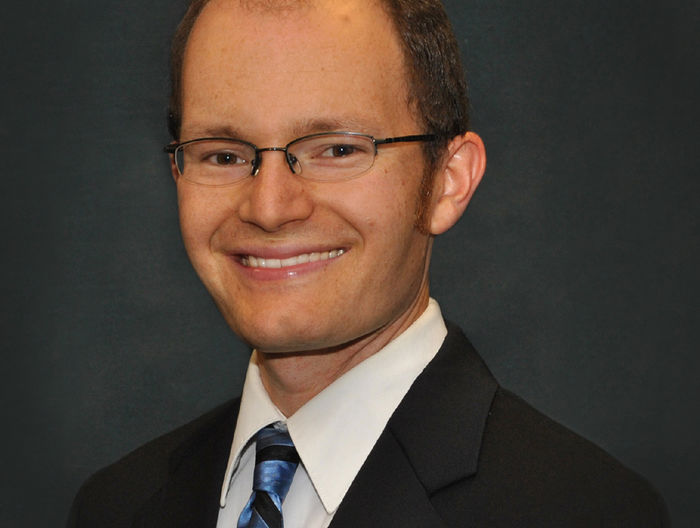
MIDDLETOWN, Pa. — Pennsylvania has received national attention as the 2022 election approaches, with high profile races for governor, as well as the U.S. Senate.
In a recent sit-down, Dan Mallinson, assistant professor of public policy and administration in Penn State Harrisburg’s School of Public Affairs, discusses why Pennsylvania has been in the spotlight and what is at stake in some of the biggest races.
Mallinson is an expert in comparative state policy and politics. His research focuses on policy related to a range of topics including cannabis, opioids, energy and the environment. He also regularly follows and comments on Pennsylvania state politics and policy.
Q: Pennsylvania’s upcoming election is of high interest both inside and outside of the state. Why is the PA election of such significance?
A: There are several different reasons. Take the PA Senate race. The U.S. Senate is currently split 50-50, with Democrats only having control because of the vice president. So, it [control of the Senate] is firmly up for grabs. Democrats face a challenging election cycle because they hold power in both the presidency and Congress, not to mention the challenging economy (i.e., inflation). But Pennsylvania is one of the best chances Democrats have of flipping a Senate seat from Republican (Pat Toomey, who’s retiring) to Democrat. This could potentially help them retain control.
The governor’s race is important for Pennsylvanians, because the governor plays such an important role in our state. But there are also national implications of this race. Pennsylvania is a swing state in presidential elections, as evidenced by [President Donald] Trump’s narrow victory in 2016 and [President Joe] Biden’s narrow victory in 2020. In the race are Josh Shapiro, the current attorney general, and Doug Mastriano, a current state senator. Mastriano has been an ardent denier of the 2020 election results. There are implications for how he might approach the 2024 presidential race if he is governor. Pennsylvania’s governor appoints the secretary of state, who oversees elections. The governor also certifies the election, which starts the Electoral College vote casting process. There is concern about what Mastriano may do if he believes there to be fraud in the 2024 election.
So, [there are] two big races that matter to Pennsylvanians, but also have national implications.
Q: What are emerging as the top issues of importance for voters in this election?
A: The economy is pretty paramount. We are feeling the effects of ongoing inflation. Abortion has been thrust into the race by the [Supreme Court’s] Dobbs decision, [which overturned the constitutional right to an abortion.] Candidates are also making crime, particularly increases in violent crime in Philly, part of their campaigns. Marijuana legalization has also gotten mixed in between Senate candidate John Fetterman’s pushing of the issue and Biden’s recent pardon and scheduling review announcement. Taxes and education funding are perennial issues in Pennsylvania that have gotten some attention. Finally, there has been some attention on Penn State and other institutions of higher education that receive state funding. But the economy has to be foremost.
That said, personal issues have absorbed a lot of attention in both races. In the Senate race, it’s John Fetterman’s health versus Mehmet Oz being from New Jersey. In the governor’s race, it’s mostly about Doug Mastriano’s election denial.
Q: November’s election is the first general election following the redrawing of Pennsylvania’s legislative and Congressional districts. What are the potential impacts of redistricting, both for Congress and the Pennsylvania General Assembly?
A: There has been talk about Democrats having a shot at taking the House in the General Assembly because of the new districts, but I’m circumspect on that. As for Congress, there is one less Republican-leaning seat in Pennsylvania, but the state also had a net loss of one seat to reapportionment. So, the shifts have not been large. By many metrics that political scientists use, it is a relatively fair map relative to the overall partisan makeup of the state, though, to be fair, that’s not the only value that matters to people. It’s not a huge difference from the map that resulted from the 2018 decision by the state Supreme Court to throw out the 2012 map.
Q: Is the aftermath of the 2020 election likely to impact the November election, and how?
A: My biggest concern is what candidates will do when they lose. We have seen some primaries across the country where Republican candidates used their loss to question the validity of their elections. The biggest concern in Pennsylvania may be Mastriano, given his record, but he may not be the only one.
The other way that the 2020 election has lingering effects on this one is in how the legislature has been completely unable to make necessary reforms to election practices. Instead, litigation continues over things like ballot drop boxes and ballot curing (fixing ballot errors). But the legislature has done nothing to give counties more time to prepare for the large influx of mail ballots (e.g., giving more pre-canvasing time), for example. They have provided more money for the election, but the parties seem unwilling to move the less-charged election system changes that have been asked for by elections officials.
Q: A recent New York Times story called the Pennsylvania governor’s race “perhaps the most consequential in the country.” What’s at stake in the governor’s race?
A: I think the context there is largely about the 2024 presidential election, but there is a bit bigger context that is applicable. There are big questions still about the extent of Trump’s influence on politics when he’s not the actual candidate. If Mastriano wins, especially with his lack of campaign funding and limited outreach to independent voters, that says something significant about Trump’s impact on not only the party, but the ability to translate his brand to other candidates.
Q: What are important factors in the Senate race?
A: Turnout. This is the case for both statewide races. The Democrats have a roughly 500,000 voter registration edge in Pennsylvania, but the state still can swing to either party in statewide elections (again, last two POTUS cycles are evidence). Turnout in Philadelphia is particularly important for a Democrat winning statewide, but we’ll also see if Fetterman’s 67-county approach peels off any moderate Republicans from Oz.
This Q&A is part of a new series in which Penn State Harrisburg faculty will share their expertise on topics in the news.





